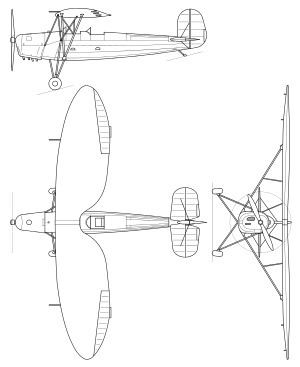Top speed 160 km/h Length 6.08 m Designer András Fábián | Wingspan 9.45 m First flight October 1940 | |
 | ||
The Levente series was a Hungarian two-seat trainer and liaison aircraft from World War II.
Contents
Design and development
Two prototypes, designed by András Fábián, (Fábián András) were built in Magyar Waggon - és Gépgyár Rt. (Hungarian Wagon and Machine Factory; one of the few big corporates of the time) in Győr. However, a tender was placed by the air forces with the profile change of the MWG, and production rights were eventually given to the Uhry brothers' factory (originally a small private vehicle body manufacturer, which later expanded rapidly and become a very successful competitor of elder corporations). The parasol-wing, open-cockpit tandem two-seat primary trainer Levente I prototype flew in October 1940. A slightly modified military version of the aircraft was named the Levente II. The aircraft's wing has an elliptical planform. In 1942, the Uhri Testvérek Autókarosszéria - és Járműgyár Kft. (Uhry Brothers Car-body and Vehicle factory Ltd.) launched a new company, Repülőgépgyár Rt. (roughly meaning Aeroplane factory jsc.) at Csepel island off the Danube, south of Budapest; renting the airfield and factory halls form Weiss Manféd Rt. The Levente II was being series produced, but the plant also repaired Bü 131s, and built prototype aircraft.
Operational history
Levente II was supplied to the Hungarian Air Force between 1941 and 1943. 100 Levente IIs were built as trainers, but as it was war, they also served in the communications/liaison roles until the end of the war. After 1945 the type was redesignated to the name Strucc (ostrich), because of the political connotations of the former name (see Levente (disambiguation))
Operators
Specifications (Levente II)
Data from Axis Aircraft of World War II
General characteristics
Performance
